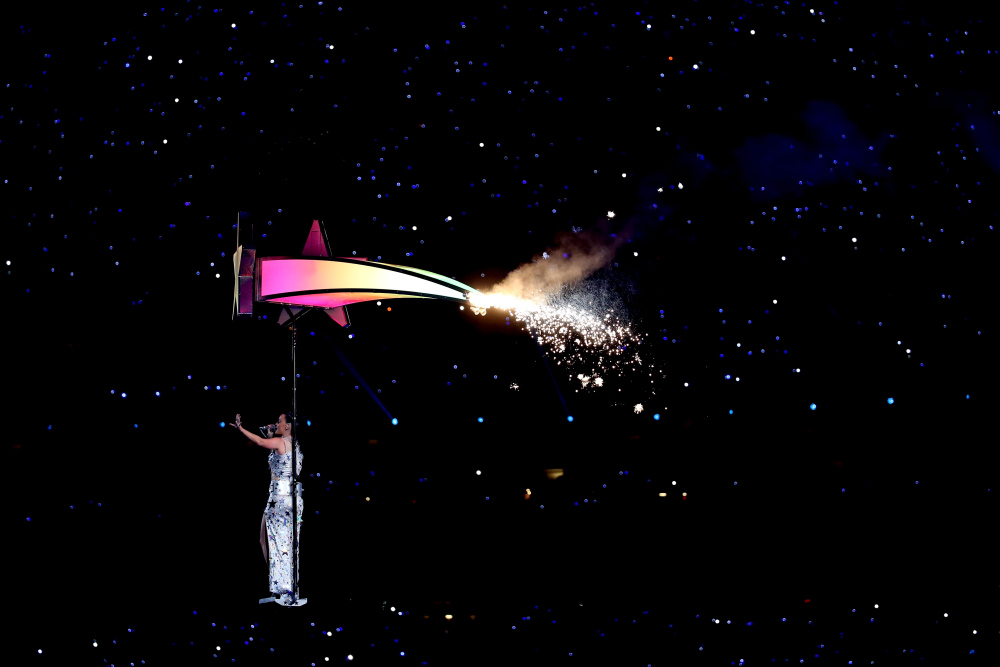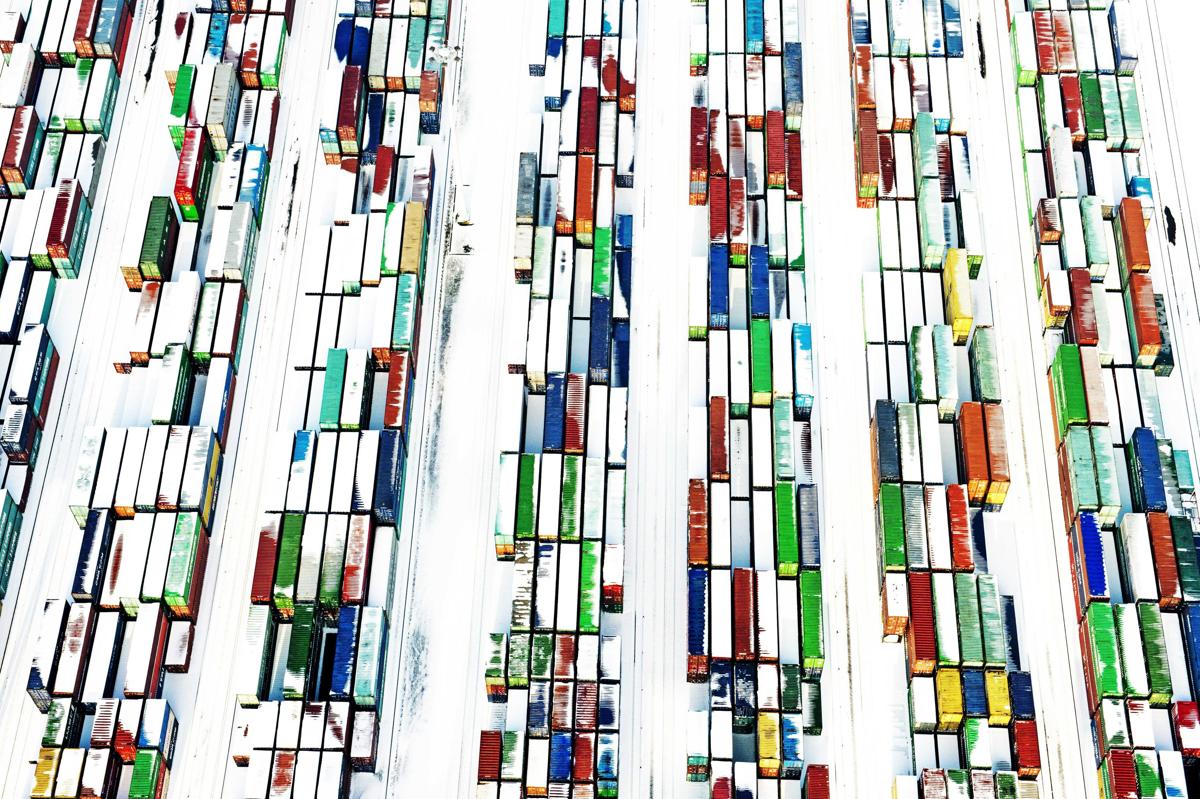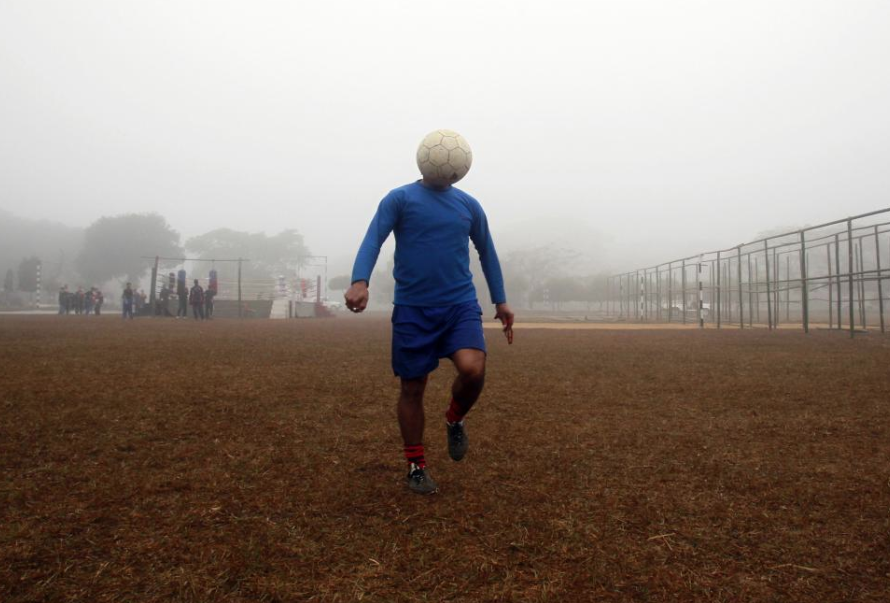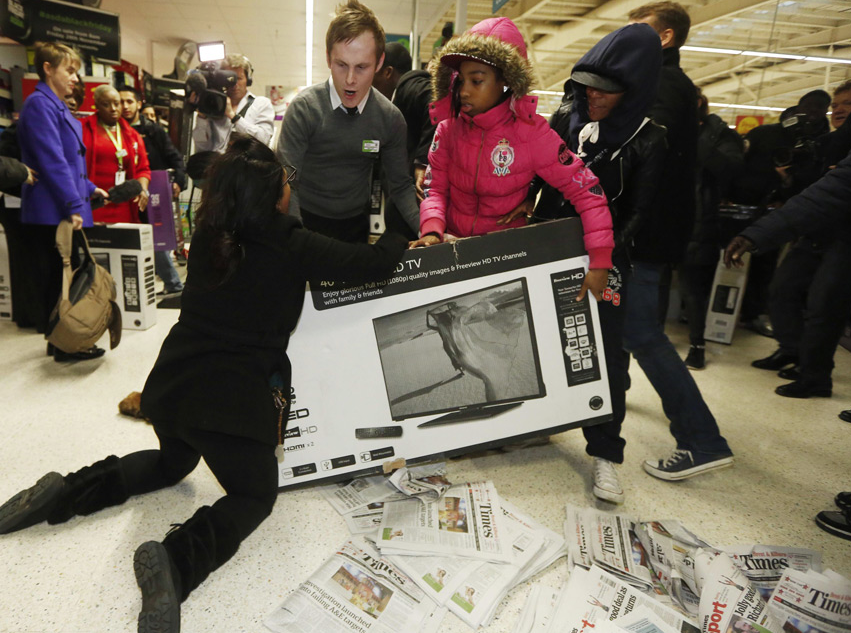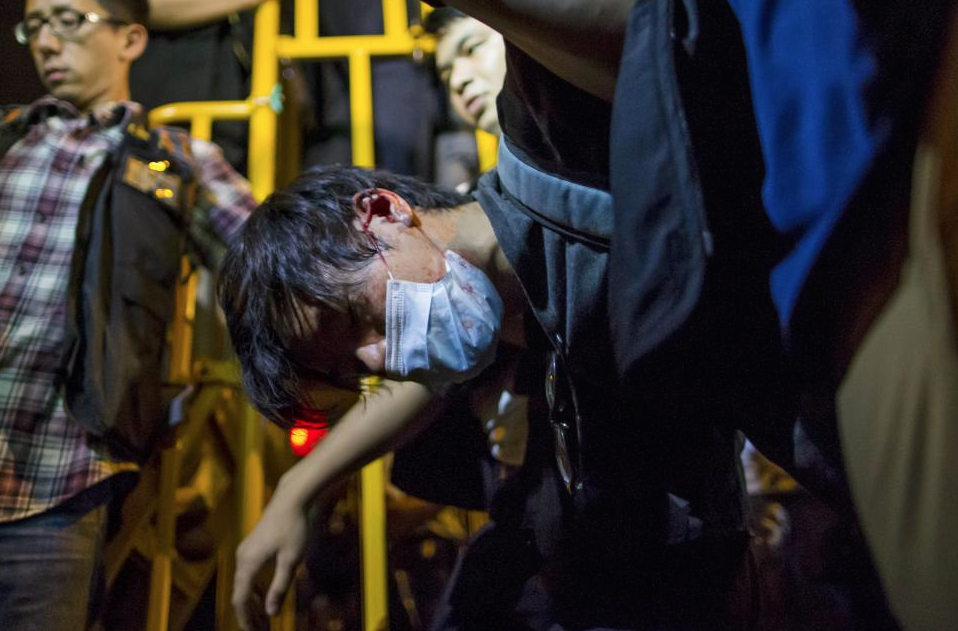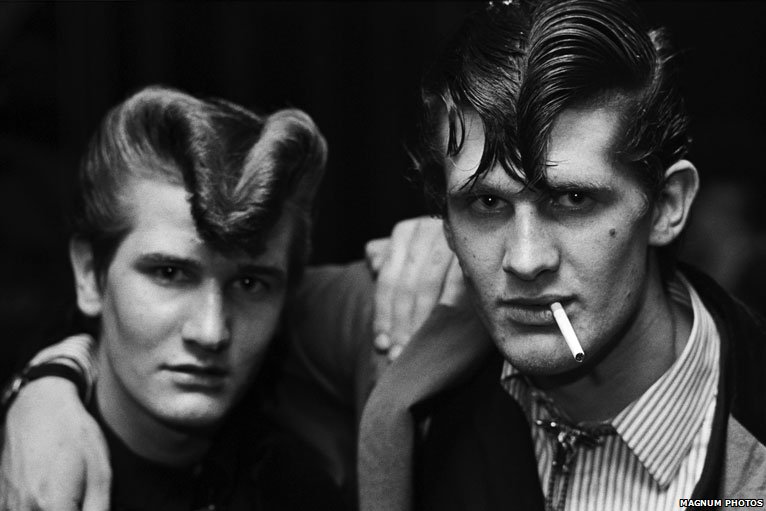Credit: David Brown
“The Moral Arc of the Universe is Long”
“… and it bends towards justice.” Or as we say on the playground, “Cheaters never prosper!” Alas, tonight the moral arc did not bend quite far enough as the Patriots managed to eke out a victory against the Seahawks. But it did take perhaps the worst call ever by the Seahawks on a second and goal from the one yard line with approximately twenty seconds on the clock to turn the moral universe on its head. Or maybe it just extended the arc so that the Commissioner can complete his “deflategate” investigation.
What does any of this have to do with the above photograph? I could wax eloquent about how the finale of the Katy Perry halftime show was an allegory for how short the moral arc of justice is, just one more media spectacle designed to mollify and confuse the masses, but …. no. Truth to tell, the photograph really has nothing to do with anything. At 6:30 p.m. I had to decide between watching the Super Bowl or spending the evening working on a post for NCN. There is a time, not so very long ago, when I would have opted for the blog. But its been a very long week and so tonight I simply wanted to be entertained. And I was. The outcome aside, it was an exciting diversion from the stresses and strains of ordinary living. And that’s what football is, right, a show, an entertainment, a spectacle, bread and circuses driven by powerful economic interests that, in the end, really do seem to trump all else and certainly anything as quixotic as moral justice. And yet, once again, truth to tell, I really did expect to see moral justice enacted on the gridiron. What could I have been thinking? One only has to read the newspapers over the past year to know that the last place we might find anything like justice would be the NFL. But as I said, it was a really good show. And so it goes.
In any case, we will be back with out regular insights on the world of photography on Wednesday.
Photo Credit: Andy Lyons/Getty Images
Nature’s Camera
What struck me most about this photograph upon first seeing it was both its sheer beauty and the invitation to introspection and contemplation. The contrast of the distant city lights sparkling against the night sky, illuminating the mountains in the background and the bluish cast of (what appears to be) the moon reflected by the water along the foregrounded shore line would seem to be a mediation on the cosmological relationship between nature and technology. Or perhaps it is a meditation on the relationship between the far (which is physically nearest to us, i.e., the city) and the near (which is physically the farthest from us, i.e., the moon). It is both of these things in the abstract, but not for the reasons that might seem to be the most obvious.
What we are actually looking at is a timed exposure of the bioluminescent glow of a green marine dinoflagellate known as Noctiluca scintillans shot with Hong Kong in the background. Sometimes called “Sea Sparkle,” the foregrounded luminescence is activated by farm pollution that—no surprise here—poses a serious threat to marine life. The bloom itself does not produce dangerous toxins, but it is something of an index of toxic runoff that endangers the food chain. In its own way, the bloom is something of a photorealistic representation of the relationship between culture and nature—nature’s camera, as it were—showing all that there is to see. As with the photograph more generally, the trick is being visually “literate” enough to avoid being enchanted by what we want (or expect) to see and to reflect on the larger significance of what we are actually seeing
Photo Credit: Kin Cheung/AP
The Serenity of Networks
It could be a circuit board, or a strip of DNA, or a bit of jewelry, or a painting. Whatever it is, it is orderly, yet not too severe; colorful, but no riot of brash hues; uniform, yet also pleasantly varied; textured, but simply so; a collection of many things, but still a study in form; abstract, yet somehow familiar–almost like crayons in a box, although it may be much bigger than that. Small/large, micro/macro, ordered/varied, colored/white, delighting the eye yet immobile, still, serene.
The caption said, “Snow covered containers decorate the port of Rotterdam, The Netherlands on January 15, 2013.” You really don’t see a port, though, or anything quite so institutional. The key is in the verb: “decorate.” Exactly right. And “snow covered” is right, too, even though it’s not literally correct: many of them are not covered with snow, but the phrase captures the feel of the image, the way in which the ordinary sense of things can be covered by a blanket of snow and seemingly transformed, as if by magic, into something quiet and beautiful. Or, you might say, the way snow can damp down the ordinary way of seeing objects–that is, in all their detailed functionality–so that we can experience the quietude that always lies in the small spaces between things.
Let me suggest that there is another sense of serenity that also might be available here. Like the snow, the shipping containers are only in a temporary repose. They have moved and will move again, to flow though circuits of trade that span the globe. The miniaturization achieved by the camera symbolizes the relationship of this one scene to the vast, dense circuitry of the global economy. What it captures, however, is not the dynamic movement of goods, information, and capital, but rather the stability in the system as a whole. That stability is not inert–like the weather, it is one feature of a system that is constantly changing–but there can be something to admire in its impersonal replication, week after week, month after month, like strands of DNA replicating again and again within a global organism.
From the view on the ground, this is nonsense, of course. The shipping industry consists of thousands of variable decisions being made at every level, all while being buffeting by winds of change over which they have no control: government policies, market conditions, technological developments, even the weather. But that’s why the view from above can be valuable. Instead of seeing only competition, friction, and another day’s work, we can see the deep sense of decoration: how the small ornament can mirror a cosmos.
“The serenity of networks” alludes to one of the classic works on the Internet: The Wealth of Networks, by Yochai Benkler. His title in turn alludes to The Wealth of Nations, by Adam Smith. The relationship between digital networks and market economies is still being explored, but each has prompted the dream that we can find in the impersonal processes of large-scale exchange something more reliable than the political behavior that so often disrupts, destabilizes, and leads to want, anxiety, and anger. The dream is not impossible, but it will not be realized without political organization.
If only that politics could start with an image such as the one above. An image that is surely decorative, but not merely so, as it also suggests how abundance can be a stable resource, orderly yet varied, complex yet reliable, grounded in what we do well and not in ignorance, fear, and anger, waiting only to be distributed where it is needed. Something that could be done, you know. . . .
Photograph by Robin Utrecht/EPA.
Cross-posted at BagNewsNotes.
On Not Seeing the Homeless
Homelessness in the United States persists. Estimates vary, but by most conservative accounts 3.5 million people experience homeless each year. That said, it is only a mere 1% of the population. And the number has actually declined a small bit in the past few years. No problem, right?
But consider this: 35% are families with children, 25% are under the age of 18, 23% are military veterans, 30% have been the victims of domestic violence, and, no surprise here, 25% suffer from some form of mental illness. The problem is significant, in other words, and many of the most vulnerable are in little position to do anything to help themselves. And so the socially conscious continue to pursue awareness campaigns.
The photograph above is from Cape Cod, MA, where 27 high school students “slept in cardboard boxes and took turns playing in a 10-hour continuous soccer game throughout the night.” The effort is well-intentioned and even honorable, but the question is: what do we see? Or perhaps, more to the point, what are we being shown? Not the homeless—or their condition—that’s for sure.
There is something of an irony here. At its heart, a huge part of the problem with homelessness is that it is a human condition that we are conditioned not to see; indeed, it is a social phenomenon that we actively turn our head away from: as children we are told not to stare and as adults we look through the homeless on our streets as if they were altogether invisible. And so, of course, the need for awareness. But there’s the rub: As much as we seem to try to animate awareness we do it by turning attention away from the thing itself and to those who no doubt feel righteous in their service to a larger cause. And as with this photograph we complicate the problem further by substituting faux homelessness for the real thing.
Look closely at the photograph. Those sleeping “in cardboard boxes” is a bit of a misnomer. They look more like children who have constructed a play fort in their living room or basement more than anything approximating a homeless person consigned to sleeping in a tattered and used cardboard box. They all look well fed. While they are surrounded by a wall of cardboard they are actually sleeping in what look to be clean and warm sleeping bags with more pillows than they know what to do with; comfortable and content, they rest with their faces fully exposed to the world as if without a care in the world. And why not. After all, they are not exposed to the elements. There is no rain or snow or cold to contend with and the bright lights of the gymnasium add an extra level of security that those sleeping in parks or alleys or under highway by-passes and bridges can rarely if ever rely upon. Those not sleeping are playing soccer, another sign that all is safe and secure. And, of course, when morning comes they will return to their homes—no longer homeless!—where breakfast and their own warm beds await.
So again, what are we being shown? The all too easy answer is the efforts of young people working to right a social wrong the best way that they know how. And the photograph certainly does that. But more than that it also shows how easy it is to sentimentalize a profound and complex social condition, to invoke the pathos necessary to action—and for that matter to access our very humanity—and at the same time to contain and direct such emotions away from the actual problem itself. Instead of seeing the homeless and the common problem that it poses for a liberal democratic society, once again we are encouraged to look elsewhere.
Credit: Stan Grossfeld/Boston Globe Staff
Where Can You Take a Visual Joke?
One answer would be in India, as with this photo. Why you would do so may be harder to say. The visual joke has been one of the lines of demarcation between amateur photography and photojournalism. Families and friends delight in them, but the pros avoid them for obvious reasons: the basic technique and typical examples are born cliched, and the practice of documentary photography is known in part by its attitude of seriousness. When some journalists are getting killed, others know better than to goof off.
There are exceptions, however. This photo was among those labeled “Editor’s Choice” at the Reuters website. More significantly, Elliott Erwitt is a photographer of the first rank, and he always has had a fondness for the visual joke. (See how easy it would have been to say “a weakness for the visual joke”?) His gag photos–e.g., of a dog’s head in place of its master’s–are numerous. More important, they are part of a social vision that is comic in the deep sense of the term: at once objective and generous, Erwitt depicts human frailty and social artifice as they are each the common lot and saving grace of our human condition. From that perspective, visual jokes are not merely low level entertainment but also invitations to tolerate each others’ imperfections, and to find moments of accidental joy in what might otherwise be a dreary day.
In the wake of the murders of the Charlie Hebdo staff for publishing political cartoons, the question of “Where can you take a visual joke?” acquires additional significance. It also has multiple meanings. One might ask where you can create and publish such humor, and where the jokes can be taken for what they are (and not, say, blasphemy), and where you can take them to do other things (say, entertain your friends or engage in political advocacy), and where you can take them now that you have offended someone (as in the American idiom of “you can take that and shove it up your . . . “). This last sense is not trivial, even if does have a range, e.g., from merely violating professional norms to risking death at the hands of evil men.
Perhaps this context contributed to the decision at Reuters to feature a photo of a man with a soccer ball for a head. If so, the gesture can be appreciated, but there is reason enough without it to admire the photograph. The substitution of the white ball with its geometric lines for a human face conforms neatly to Scott McLeod’s theory of the identification evoked by cartoon characters, which, because they are relatively featureless, match our interior and necessarily schematic sense of self rather than our experiences of how others look. Thus, the faceless figure prompts the viewer to look at another person from a distant place as a way to see oneself. What you might see is up to you, but it does matter that you can see it, or a hint of it, in someone who is not you.
That abstract sense of the individual is reflected in the simplicity of the rest of the scene. The barren yet textured field creates the perceptual ground against which the central figure is defined. The fences surrounding the athletic field create a sense of enclosure, almost as if it were a prison yard or military base, which is matched emotionally by the morning fog. The man’s posture and hands suggest attentive focus of mind and body, just as the uniform, equipment, field, and the routine itself–keeping the ball in the air as he marches down the field–all are part of a disciplined practice. He is not joking, but he is demonstrating the intense involvement in a single activity that is the mark of play and of work at its best. Some might say that the fusion of work and play is civilization at its best, and that excessive separation of the two is a downward path. Jokes might be closer to our higher selves than we think.
The photographer was joking, just a bit, anyway, as the image involves taking delight in the obvious artifice of the camera. In a week when there isn’t much to joke about, the small moment of levity provided here might be thought of as a moment of grace. And as a reminder that life goes on, especially if you are in a place where you can take a joke.
Photograph by Jayanta Dey/Reuters.
NCN on Holiday Break
Best wishes for a peaceful holiday. We’ll return to our regular schedule on January 12.
Architectural detail from St. Pascal’s Church in Chicago, via “A rare bird: the Art Deco church” at A Chicago Sojourn.
’Tis the Season …
I used to think that one didn’t have to be Christian to celebrate and appreciate the Christmas season. Yes, for the devout it marks the birth of Christ, and in that context it has an important spiritual significance that should not be scanted. But it also corresponds roughly with the winter solstice and, for the past century, at least in the West, it has been a secular holiday that celebrates the virtues of charity and selfless giving regardless of one’s religious affiliation. If it were only so simple!
Sadly, Christmas has also become a season for the gross accumulation of commodities under the sign of charity and giving. Children—in all of their innocence—are the primary beneficiaries of the holiday as they are indulged with all manner of toys and goodies distributed, somewhat magically, by an elfish deity who somehow distinguishes good from bad. And, of course, the more toys and goodies all the better. Or at least such is the myth of its representation in popular discourse. But truth to tell, there is something of a fetish to such giving that is more important to the adults who underwrite such indulgences than to the children who receive it—think of all the commercials you’ve seen where the parent’s satisfaction in observing their children far exceeds the joy of the children themselves. Put differently, the joy of giving in this scenario is more a justification for one’s own desire for the accumulation of goods than it is a desire to please the other.
The photograph above is only one of many representations of Black Friday, where adults camp out for hours in anticipation of the opportunity to accumulate commodities at a highly discounted rate. The supply always far exceeds the demand accenting the value of the goods and animating the desire for their possession, often leading to violence. Here, adults and children fight over a high definition television. There are many things worth fighting for, to be sure, but a television set? What is most revealing about the scene, however, is not so much the scuffle as it is the reaction of the spectators, some who have already claimed their own televisions. Some seem to be ignoring the scene altogether, not unlike the way they might walk past a homeless person as if they weren’t there, while others look on with a sadness that stands in marked contrast to what is supposed to be the joyousness of the season.
It is hard to know what to make of all of this, but perhaps there is a clue in the presence of the videographer who is capturing the scene for the nightly news. He knew exactly what was going to happen because what he is watching is a ritual event that takes place throughout the capitalist world (this scene is in a superstore in Wembley, England, but it could be in any Best Buy or Walmart in any city in the United States, or elsewhere for that matter), year after year, and as much as we might revile the greed that seeps through in such images we seem to celebrate it as well, casting such images each year as real time performances (advertisements?) of what we secretly value the most—and that is not the joy of giving but the accumulation of goods. As the bumper sticker says, “He who dies with the most toys wins!”
No, one does not have to be Christian to celebrate the Christmas holiday, and all I can say is … more’s the pity.
Credit: Luke MacGregor/Reuters
The Beatings Will Continue
until morale improves.
News reports as I write are that the protest leadership in Hong Kong is divided over the question of whether to disband the demonstrations. Many students want to continue, as the objectives of the protest have not been met. Others want to stand down to stop the escalating violence that contradicts the movement’s original intention and values.
I wonder how this guy would vote?
We can’t even make a good guess, as violence can either break or stiffen resolve. The caption informs us that “A pro-democracy protester, with blood on his face, is detained by police during a confrontation.” The caption is a model of professional objectivity–and euphemism. How that blood got on his face, we apparently can’t say. And “detained,” well, that’s one word for it. And whether he is conscious, semiconscious, or out cold is left unsaid; perhaps he is resting. . . . .
Many of the photographs from the demonstration have been uplifting testaments to peaceful civil disobedience on behalf of democratic ideals. Not to mention the eye candy: colorful umbrellas, post-it note signage, and origami displays amidst a gleaming cityscape lend themselves to appealing images, and beautiful young people who look more studious than dangerous can even make politics look attractive. Throw in a few cellphones and a laptop or two, and you have a liberal techno-globalist dream come true. Thomas Friedman, start writing.
Which is why I admire this photograph. It is not pretty; it is disturbing. The boy has been beaten. The mask to avoid tear gas now signifies the hospital care that he needs and may not get soon. His youth has been turned as well: from future-oriented idealism and courage to sheer physical and psychological vulnerability. Almost everything else in the frame also is destabilized: the yellow metal could be a cage, the red bulb says both “emergency” and “interrogation,” the thin young man is rearing back as if threatened while being more exposed than he knows, the isolated face could be friendly or hostile, perhaps a traitor in the making as everyone seems subject to different vectors in the force field. Against this shuddering disconnection and ambiguity, only the policeman’s mass in the right foreground stands unchanged–and yet inchoate.
The photograph reminds us that government still is too often conducted the old fashioned way: with violence. And that bearing witness to common ideals will lead to brutality and pain that is borne not by all who believe, but by a few who are given far more than their share of the load. And if all we can do is watch, we should at least recognize that we have a responsibility to do so, all down the line.
The demonstrators may decide to stay, or not. (Frankly, I think they should leave–for awhile.) Either way, however, the beatings will continue.
Eventually, it might become too much to watch. I wonder what we will do then?
Photograph by Tyrone Siu/Reuters.
Cross-posted at BagNewsNotes.
NCN Fall Break
We’ll be offline for two weeks–some travel, a conference, and the Thanksgiving holiday–to return on December 1.

